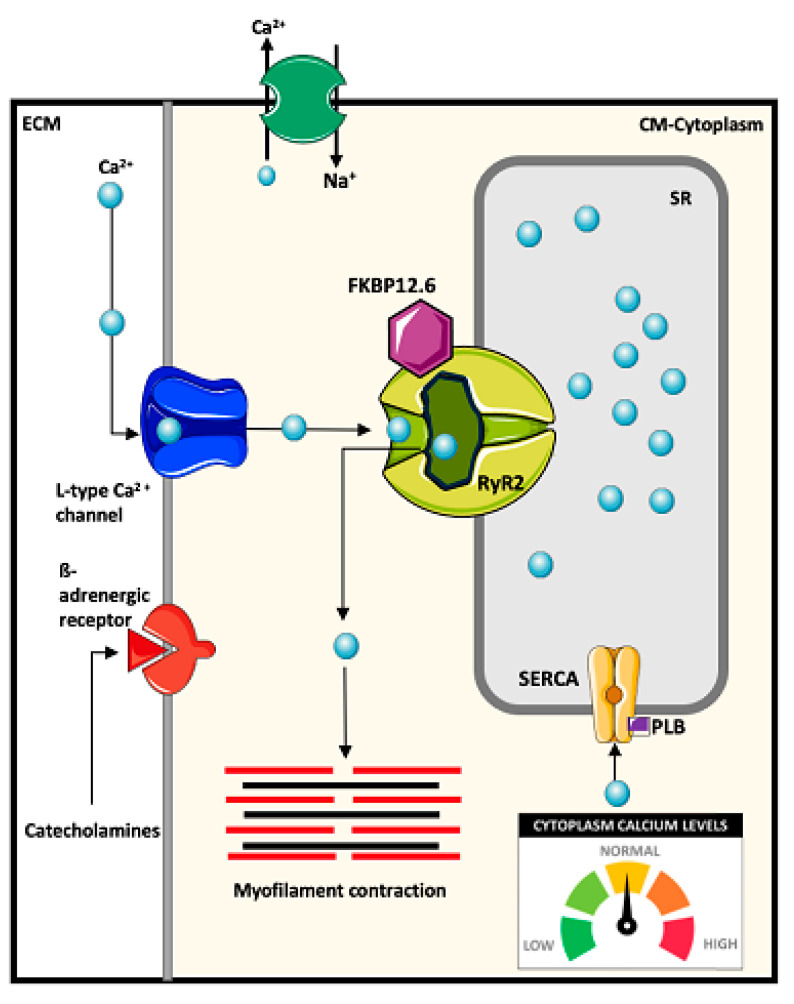Figure 2.
Ca2+ induced Ca2+ release mechanism: The cardiac action potential leads to membrane depolarization, thereby opening L-type Ca2+ channels (CaV1.2). Ca2+ in the cytosol then binds to the ryanodine receptor 2 (RyR2) leading to CICR from the sarcoplasmic reticulum (SR) lumen into the cytosol. During systole, the cytosolic Ca2+ then binds to troponin C which leads to myocardial contraction. Ca2+ in the cytoplasm is returned to the SR via the sarco/endoplasmic reticulum Ca2+-ATPase (SERCA2a) and its regulatory protein phospholamban (PLB). CM = cardiomyocyte; ECM = extracellular matrix. Image adapted from Priori, S. G., and Chen, S. W. (2011), Circulation Research, 108(7), 871–883 [49].

